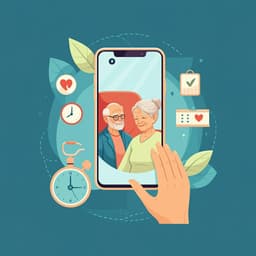
Medicine and Health
Turn Healthcare Workers Loose with Outpatient Telemedicine-Let Them Decide Its Fate; No Top-Down Decisions on What It Can and Cannot Do
S. A. Klotz, J. B. Jernberg, et al.
This commentary champions the extensive adoption of outpatient telemedicine, showcasing its numerous advantages like effectiveness, educational potential, and cost-efficiency. The authors from the University of Arizona advocate for overcoming barriers and empowering healthcare professionals to leverage telemedicine optimally.
~3 min • Beginner • English
Related Publications
Explore these studies to deepen your understanding of the subject.







